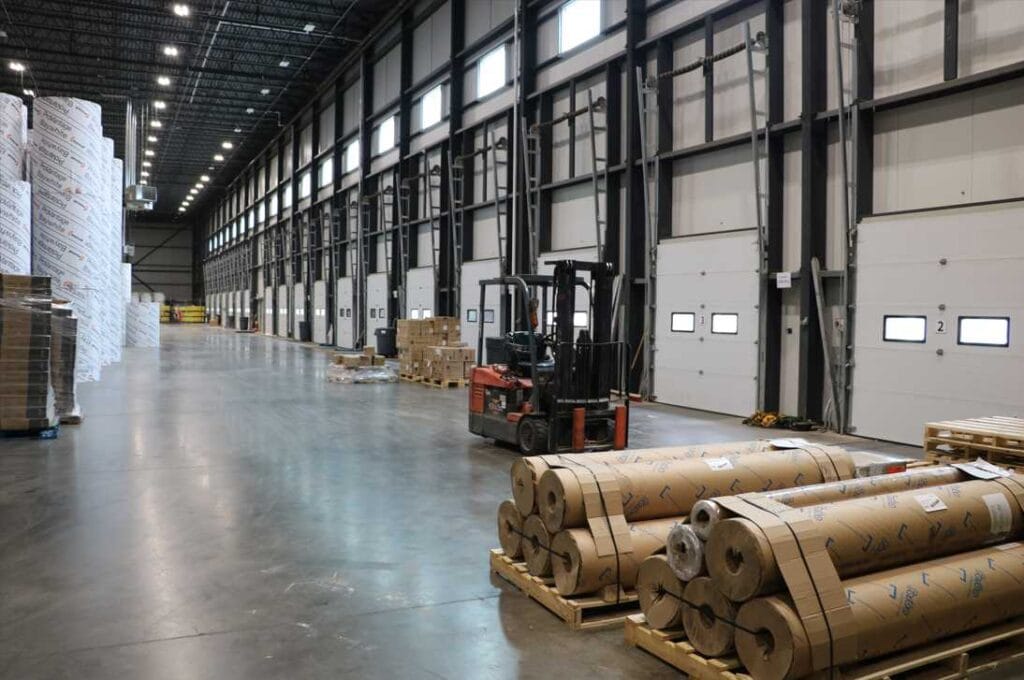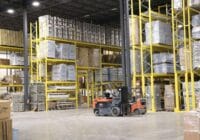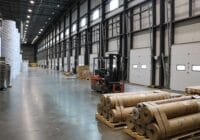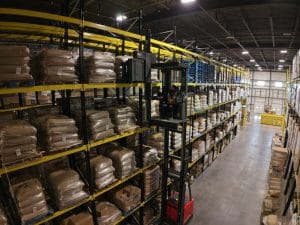If you’re running a product-based business, you’ve probably heard the phrase “distribution center vs warehouse” thrown around like they mean the same thing. They don’t. While both store goods, they serve very different purposes in the supply chain.
Let’s break it down clearly—no fluff, no jargon.
What Is a Warehouse?

A warehouse is a storage facility. Its main job? Hold products. That’s it.
Here’s what typically happens in a warehouse:
- Goods arrive from suppliers
- They’re identified, verified, and shelved
- Items stay there until they’re needed
- Eventually, they’re picked and shipped out—usually in bulk
Warehouses are useful for long-term storage. You’ll often find them near highways, seaports, or railways, and they may have temperature control, security features, or special sections for perishable or hazardous goods.
But overall, a warehouse is passive. It’s about holding inventory, not moving it fast.
What Is a Distribution Center?
A distribution center (often called a DC) is built for speed and efficiency. Think of it as the engine room of order fulfillment.
Here’s what happens inside:
- Goods arrive, often from a warehouse
- Orders are processed, packed, and shipped out fast
- The focus is on serving customers quickly
Distribution centers are active. They may offer services like:
- Order fulfillment
- Cross-docking
- Bulk breaking
- Product mixing
- Custom packaging
DCs are often powered by automation, AI, and warehouse management systems. They’re designed to keep goods moving, not sitting on shelves.
Key Differences: Warehouse vs Distribution Center
| Feature | Warehouse | Distribution Center |
| Main Purpose | Long-term storage | Fast order processing & shipping |
| Storage Time | Weeks or months | Hours or days |
| Customer Focus | Low | High |
| Order Fulfillment | Not typically handled | Core function |
| Flow Rate | Slow | Fast |
| Technology | Basic shelving & tracking | Advanced automation, WMS, TMS |
| Additional Services | Limited | Repackaging, labeling, customization |
| Supply Chain Role | Stores goods | Moves goods to end customers |
Which One Costs More: Warehouse or Distribution Center?
In most cases, distribution centers cost more to operate than warehouses. Here’s why:
- Higher labor needs: Distribution centers need more staff for picking, packing, and shipping.
- Tech investment: DCs often run on warehouse management systems (WMS), sorting machines, or even robotics.
- Faster turnover: Faster movement means more handling, which increases costs.
Warehouses tend to have lower day-to-day costs, but their storage time makes them more expensive for long-term holding if the goods don’t move.
How Inventory Flow Works Between Warehouse and Distribution Center
Most large companies use both, but in different ways. Here’s how inventory usually moves:
Supplier → Warehouse → Distribution Center → Customer
- Warehouses receive bulk shipments and hold products
- Distribution centers pull from warehouses to fulfill real-time customer orders
This setup balances storage efficiency with delivery speed.
Common Mistakes When Choosing Between the Two
Many businesses make poor logistics decisions early on. Here are a few common mistakes:
- Using a warehouse when fulfillment is needed: This leads to slow deliveries, order errors, and customer complaints.
- Skipping the warehouse stage: Trying to push all inventory through one distribution center can clog the system.
- Underestimating tech needs: A distribution center without proper software turns into chaos fast.
Understanding the right tool for the right job saves time and money.
Real-Life Examples: When to Use Each One
Let’s make it practical:
- You’re a fashion brand building stock for winter sales → Use a warehouse
- You sell home goods online with 2-day delivery → Use a distribution center
- You’re launching a new product line and unsure of demand → Start with a warehouse, then move to DCs
Some companies even use regional warehouses to feed local distribution centers, speeding up delivery while keeping costs under control.
Can a Warehouse Turn Into a Distribution Center?
Yes, hybrid models exist.
Many businesses upgrade warehouses with:
- Basic automation (scanners, conveyors)
- Warehouse management software (WMS)
- A small team for picking and packing
This turns a passive space into a semi-active one. However, if your volume scales, it’s better to use a purpose-built DC.
What About Fulfillment Centers?
Let’s quickly clear up the confusion around the third term in our keyword list.
Warehouse vs Distribution Centre vs Fulfillment Center:
- A warehouse is for storage
- A distribution center is for processing and shipping
- A fulfillment center is a type of distribution center designed specifically for e-commerce orders (think Amazon)
So technically, all fulfillment centers are distribution centers—but not all distribution centers are fulfillment centers.
Final Thoughts: Which One Do You Need?
Ask yourself:
- Do I need to store bulk inventory long-term? → Go with a warehouse
- Do I need to ship orders fast and often? → You need a distribution center
- Running an e-commerce shop? → A fulfillment center might be ideal
If you’re serious about keeping your supply chain efficient, don’t mix up these terms. Each has its place. And knowing which one fits your business model will save you time, money, and headaches.
FAQs
1. Is a distribution center the same as a warehouse?
No. Warehouses are for storage. Distribution centers are for processing and shipping orders quickly.
2. Can a facility be both?
Yes. Some modern facilities blend storage and fulfillment, but they still prioritize one over the other.
3. What’s the role of a fulfillment center?
It’s a specialized distribution center built for handling online orders and returns efficiently.
4. Why do goods stay longer in warehouses?
Because they’re built for holding inventory until demand rises, especially for seasonal products.
5. Which is better for small businesses?
It depends. If you’re shipping daily, a fulfillment or distribution center is best. If you’re producing in bulk and shipping rarely, a warehouse may be enough.



